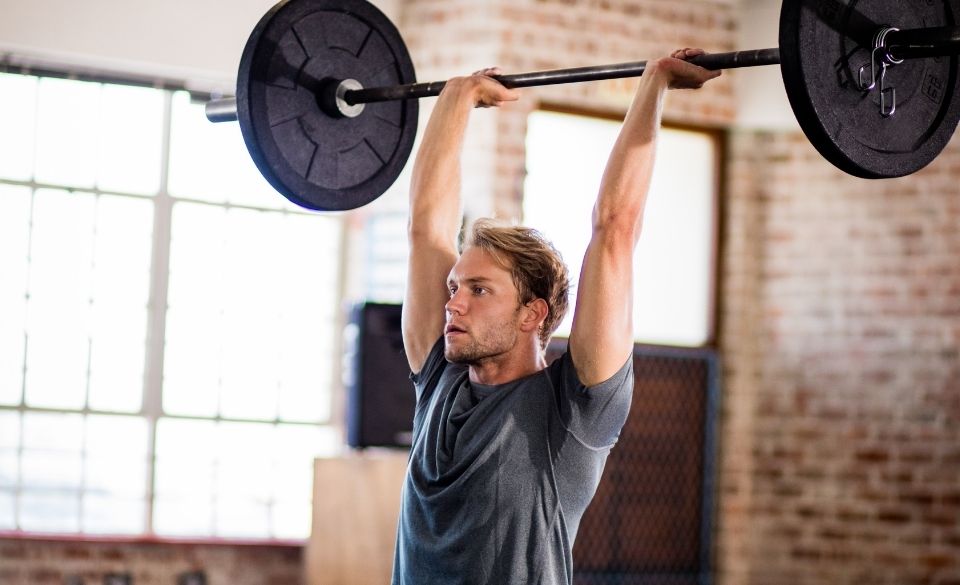
Power Clean Strength Standards – UPDATED 2022 – A Complete Guide
Page Contents
The power clean is a lift that’s popular because of its low risk, high reward style. A lot of people have found themselves turned off by frequent injuries during deadlifting, and the power clean is an attractive alternative exercise to try in 2022.
If you’re making the move from deadlifts to power cleans, it’s important to know about the power clean strength standards. The standards for the power clean are much different than the standards for deadlifts or any other lift.
This guide aims to help you understand power clean strength standards, break them down by age, and answer some common questions about power clean strength standards.
Power Clean Strength Standards – UPDATED 2022
First of all, let’s talk about what are power clean strength standards? Or what are strength standards in general?
A strength standard is a measurement of progress for a specific workout. You can find strength standards for everything from push-ups to chin-ups.
Standards take a person of a certain age, weight, and/or height, and try to measure how much of a specific exercise they can do within a certain time (or until they can’t continue).
Standards can be created in a couple of ways. The first is through scientific study. Here, researchers will ask healthy volunteers of all age brackets and weight brackets to do exercises, and the result will be recorded. These results then become standards.
Alternatively, standards can be set through evidence. This is usually through a collection of information available online, and this information is then spread by content creators. This is a more informal standard, but it’s also a more widely representative one.
So, what do strength standards mean to you? And should you even pay attention to strength standards?
Strength standards can be used as a measure of your progress. They’re usually separated into 5 categories: beginner, novice, intermediate, advanced, and elite. Strength standards are presented as a table, with average weights on the Y axis and levels on the X axis.
The proper way to use strength standards is to find your weight, and then determine what category you are. You then look at the standard for this category and see where you are against it.
If you can comfortably meet the reps or the weight, then you should move up a category. If you can’t, then you should make this your next goal.
Power clean strength standards work in the same way. Something to note is that the measure for a power clean standard is the amount of weight you have on the barbell, and not how many times you can lift that weight. It’s about the absolute maximum weight you can lift.
Understanding the Power Clean Age Chart
The power clean strength standards chart has two variations: age and weight. Which one you use is personal preference, and you should track whichever chart you feel is more accurate to you.
That being said, the power clean age chart is the lesser used of the two, so understanding the power clean age chart is essential to making it an effective tool.
The power clean age chart starts at age 15 and goes all the way up to age 90. If you’re lifting at either end of this spectrum, then that’s some dedication. The graph has age increments of 5 years, so it goes 15, 20, 25 etc.
Like most strength standards charts, each age has 5 brackets of weight, ranging from beginner to elite. For example, a beginner aged 15 should be able to power clean 85lb. An intermediate lifter aged 15 should be able to power clean a weight of 169lb.
An essential thing to remember is that the power clean age chart does not increase at a linear rate every age. What this means is that it starts at an average level, peaks in the middle, and then rapidly drops off.
So, an intermediate 15-year-old can lift 169lb. An intermediate 40-year-old can lift 262 lb. Does this mean that a 90-year-old can lift over 300lb? Nope, it’s the opposite – an intermediate 90-year-old can only lift 78lb according to the standards.

Average Power Clean Weight for Age
Let’s talk about the average power clean weight for age. Why does the strength standards chart drop off as the average lifter gets older?
The peak of the power clean strength standards is around age 40 – after 40, the maximum weight standard begins to drop off. It’s interesting to see that the power clean strength standard of age 40 is also the same as at ages 25, 30, and 35.
So why does it begin to decrease after 4o years old? This is due to one of the natural processes of aging, muscle atrophy. On average, muscle atrophy begins to take effect at age 30, but it’s not noticeable at all until you reach age 40.
By this point, your muscles will begin to be around 3 – 10% less effective every decade than they were at their peak. Even if you keep on top of training and are as fit and healthy as can be, going into your 50s your muscles could have degraded by 10%.
Muscle atrophy means that you might find lifting the same weights harder than you used to, and that there are more risks involved with lifting. This includes injuries such as muscle tears.
That’s not to say you can’t continue lifting at any age though. The power clean strength standards are accurate and a good measurement, but they’re not law. If you feel like you can lift a higher weight than they say you should be able to, then there’s nothing stopping you from trying.
Power Clean Strength Standards – Closing Thoughts
That’s all we have for our guide to power clean strength standards. Strength standards charts and guides are a great tool for beginners and veterans but should be used in combination with proper research and knowledge of the exercise you’re doing.
Make sure to keep following us for even more guides to strength standards for different exercises and lifts.


